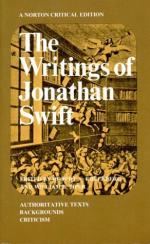There is another person whom the same writer is thought to point at under the name of Will Bigamy.[20] This gentleman, knowing that marriage fees were a considerable perquisite to the clergy, found out a way of improving them cent. per cent. for the good of the Church. His invention was to marry a second wife while the first was alive, convincing her of the lawfulness by such arguments, as he did not doubt would make others follow the same example: These he had drawn up in writing with intention to publish for the general good; and it is hoped he may now have leisure to finish them.[21]
[Footnote 1: No. 22 in the reprint. [T.S.]]
[Footnote 2: I. e. 1710-11. [T.S.]]
[Footnote 3: Cicero, “in Verrem,” II. i. 15: “There are no intrigues more difficult to guard against than those which are concealed under a pretence of duty, or under the name of some intimate connexion.”—C.D. YONGE. [T.S.]]
[Footnote 4: See No. 19, ante (not quoted correctly). [T.S.]]
[Footnote 5: Horace, “Ars Poetica,” 139:
“The mountains laboured with prodigious throes.”—P. FRANCIS. [T.S.]]
[Footnote 6: See No. 22, ante. [T.S.]]
[Footnote 7: The serpent, or dragon, is said to have seven heads in an earlier verse of the same chapter. See Rev. xii., 3, 9, 15. [T.S.]]
[Footnote 8: The Earl of Sunderland and Henry Boyle (Secretaries of State), Earl of Godolphin (Lord Treasurer), Lord Somers (President of the Council), Lord Cowper (Lord Chancellor), Duke of Marlborough (Captain General), and Horatio Walpole (Secretary of War). [T.S.]]
[Footnote 9: General Stanhope, at Brihuega, was surprised and compelled to surrender on December 9th, 1710. Oldmixon’s “Sequel” (p. 452) remarks: “The misfortune which happened to General Stanhope at Brihuega, where he was surrounded by the French and Spanish, armies, and after a most gallant defence, obliged to surrender himself with several English battalions prisoners of war, was some relief to high-church; ... they did not stick to rejoice at it.” [T.S.]]
[Footnote 10: The Test Act was passed in 1672 and repealed only in 1828. [T.S.]]
[Footnote 11: This paper was a pamphlet by Charles Leslie, published October, 1708, which was condemned to be burnt by the House of Commons in January, 1709/10. It was entitled, “A Letter from a Gentleman in Scotland to his Friend in England, against the Sacramental Test.” [T.S.]]
[Footnote 12: This declaration was prescribed by the Act I William and Mary, c. 18, s. 13. It was repealed in 1871. [T.S.]]
[Footnote 13: John Toland, author of “Christianity not Mysterious” (1696) and other works. See note on p. 9 of vol. iii. of present edition. [T.S.]]
[Footnote 14: William Coward (1656-1725), physician, was the author of “Second Thoughts Concerning Human Soul” (1702), and “The Grand Essay; or A Vindication of Reason and Religion” (1703/4). Both these works were ordered by the House of Commons to be burnt, March 17th, 1703/4. See also note on p. 9 of vol. iii. of present edition. [T.S.]]




